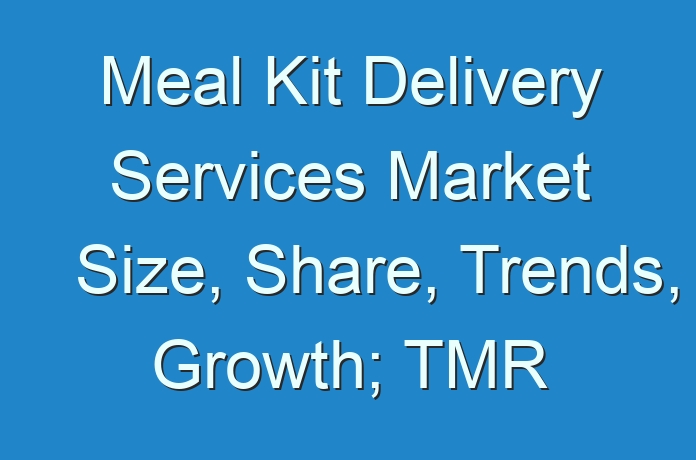
A meal kit is a weekly or monthly subscription service that sends customers recipes and food ingredients to cook their own fresh meal at home. The services which include delivery of pre-cooked meals are known as meal delivery services. In 2007, the first meal kit delivery service started in Europe. This concept quickly became popular and it is estimated to grow at a fast rate during the forecast period. Preparation and cooking of meals on an average takes around 30 minutes to an hour. Dinner meals from these meal kit delivery services cost between US$ 8 and US$12 per person, per meal. Most meal kit companies require the customer to subscribe to the service. The subscription for every week includes a predefined number of meals for a specific number of people. The meals sent to the customers are based on their preferences selected at the beginning of the subscription and includes items depending on preference of the customer that is, vegetarian or non-vegetarian.
Looking for exclusive market insights from business experts? Request a Custom Report
The meal kit delivery services market is expected to expand at a good growth rate during the forecast period. Demand for meal kit delivery services is driven by rising urban population, increase in number of working women, and rising number of people in the middle class bracket in developing countries such as China and India. Furthermore, due to improved lifestyle in emerging countries, disposable income of individuals has increased and people tend to buy meal kit subscriptions. These factors have forced the companies to provide better quality meal kit delivery services on a weekly or monthly basis. Ease of use of service, convenient and faster mode of cooking, less time consuming, consideration of meal preferences (veg, seafood, chicken) are the factors which are also expected to contribute to the growth of the meal kit delivery services market. Factors such as preference for traditional method of cooking, fresh preparation of food items in some parts of the world, and health related concerns might act as a restraint to the growth of the market.
The meal kit delivery services market is segmented on the basis of channel and region. The market is segmented on the basis of channel into online and offline. Offline segment of the meal kit delivery services market is again sub divided into hypermarkets, grocery stores, specialty stores and others. The meal kit delivery services market is divided into North America, Europe, Asia Pacific, Middle East & Africa, and South America on the basis of region. The North America region is sub segmented into the U.S., Canada, and Rest of North America. Europe region is divided into the U.K., Germany, Italy, France, and Rest of Europe. Asia Pacific region is again sub segmented into China, India, Japan, and the rest.
Want to know the obstructions to your company’s growth in future? Request a brochure @ https://www.transparencymarketresearch.com/sample/sample.php?flag=S&rep_id=38594
Some of the key players in the meal kit delivery services market include Blue Apron, Just Add Cooking, Ahold USA, Din, Chef’d, Cooking Simplified, Foodstirs, Gobble, FreshDirect, Green Chef, Green Blender, HelloFresh, Handpick, Home Chef, Hungryroot, Markey Spoon, Munchery, Plated, PeachDish, Saffron Fix, Terra’s Kitchen, Pantry, Sun Basket,Tyson Foods, Martha & Marley Spoon, BurgaBox, Farmhouse Delivery Supper Club, Feastive, The Purple Carrot, Foodstirs, Good Eggs, Kitchen Table, One Potato, and Thai Direct. The recipes which companies offer is one of the main attractive features of the meal kit delivery services market. This feature allows the consumer to try out new dishes every week which they may not have considered earlier to prepare at home. Generally, these meals are healthy and flavorful and take into consideration calorie intake as well. Furthermore, the companies periodically launch exciting offers to promote their meal kit delivery services and adopt innovative marketing strategies to attract consumers.
Read TMR Research Methodology at https://www.transparencymarketresearch.com/methodology.html





